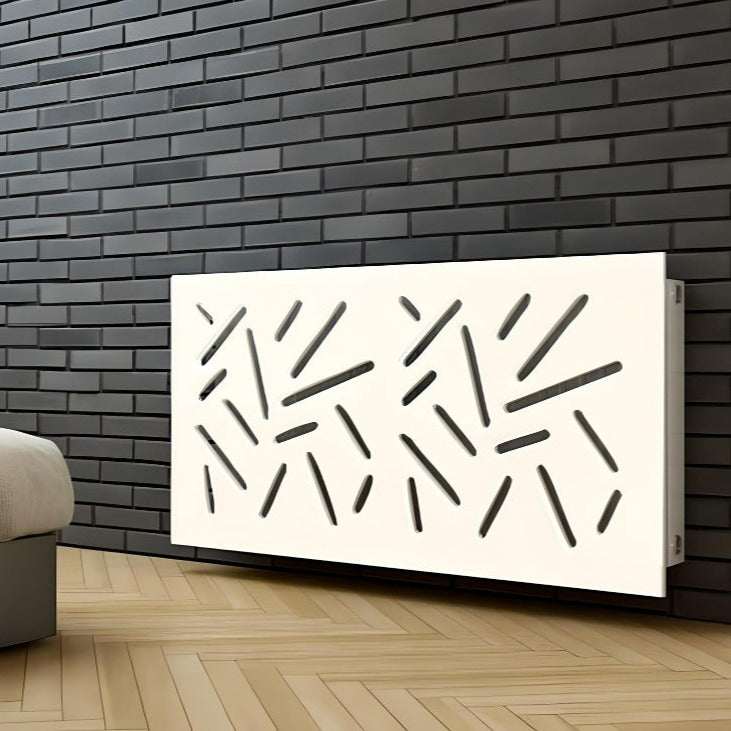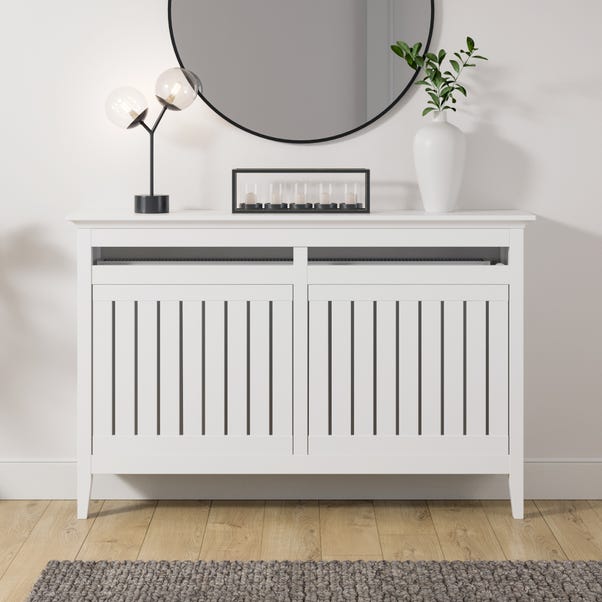DIY Tips for Installing a Radiator Cover easily
Wiki Article
Radiator Covers: Comprehending Materials, Designs, and Advantages
Radiator covers offer both useful and visual functions within a home, providing a variety of materials such as metal, mdf, and wood to suit different layout preferences. As styles evolveâEUR" from typical to contemporaryâEUR" these covers not just improve the visual charm of a space but also add to safety and energy effectiveness. Selecting the right radiator cover entails comprehending the subtleties of materials, layouts, and their connected advantages. This exploration elevates essential concerns concerning exactly how these components integrate right into your living environment and what factors to consider ought to lead your selection procedure.Kinds of Materials


Wooden covers, commonly crafted from hardwoods such as oak or maple, give a classic, cozy look that complements standard insides. Their sturdiness and capacity to be stained or painted add to their versatility. Metal covers, normally made from steel or aluminum, are preferred for their robustness and contemporary appearance, usually featuring streamlined lines that enhance modern rooms.
MDF, a manufactured wood item, is preferred for its cost-effectiveness and ease of personalization. It can be repainted or finished to match existing decoration while offering a smooth surface. Plastic covers, while less usual, are resistant and light-weight to moisture, making them suitable for damp settings.
Inevitably, the choice of material for a radiator cover must line up with the house owner's design choices, practical demands, and the certain atmosphere where the cover will certainly be mounted. Each product uses a distinctive personality, making certain that there is an alternative to match every preference and setting.
Popular Layout Styles
Stressing aesthetic appeal, prominent layout styles for radiator covers mirror a range of tastes and interior decoration patterns. Traditional styles often include intricate woodwork and ornate detailing, making them appropriate for classic or vintage-inspired interiors. These covers usually incorporate sculpted components, providing a warm and welcoming feeling to any room.On the other hand, contemporary designs concentrate on minimalist aesthetic appeals, characterized by tidy lines and downplayed beauty. Products such as metal or sleek timber with a smooth surface are commonly made use of, enabling these covers to mix effortlessly into modern-day areas. Industrial designs, on the other hand, embrace basic materials like subjected steel and concrete, adding a bold declaration to loft space or metropolitan setups.
For those looking for a distinct touch, bespoke layouts provide modification options that satisfy specific preferences, allowing homeowners to choose shades, patterns, and materials that match their style. Additionally, farmhouse-style covers integrate rustic aspects, including distressed wood and basic kinds that evoke a comfortable, nation beauty.
Benefits of Radiator Covers
Radiator covers not just enhance the aesthetic charm of an area yet also provide a number of sensible advantages that make them a worthwhile addition to any type of home. One of the main benefits is safety and security, specifically in households with children or animals. Covers lower the threat of burns from hot radiator surfaces, ensuring a safer environment.Furthermore, radiator covers can enhance energy effectiveness. By guiding warm into the space as opposed to allowing it to leave, they help maintain a consistent temperature, reducing heating prices over time. This is especially beneficial in older homes where radiator systems may be much less reliable.
One more significant benefit is sound decrease. Radiators can occasionally create unwanted sounds during procedure, and covers can assist stifle these noises, adding to an extra relaxed home. Moreover, radiator covers can be practical, offering additional storage space or screen space, thereby making the most of the energy of often-overlooked locations.
Lastly, they can protect radiators from dirt and debris, which can prevent effectiveness and increase upkeep needs. With these incorporated benefits, radiator covers emerge as a functional service for boosting both the performance and style of any kind of home environment.
Installment Considerations
Mounting radiator covers requires mindful consideration to make certain both performance and safety and security (Radiator cover). Evaluate the measurements of your radiator and the surrounding space to make sure an appropriate fit. Precise dimensions are crucial; an ill-fitting cover can block heat flow or develop safety dangersFollowing, evaluate the material of the cover. While timber offers aesthetic allure, steel options may give better longevity and heat resistance. Think about the weight of the cover also; larger click here now covers may need extra assistance or supports to avoid sagging or damages with time.
Air flow is another vital element. Covers have to include adequate airflow to stop getting too hot and keep reliable heating. Search for styles with slats or openings that enable warm click to investigate to flow without blockage.
In addition, ensure that the cover is securely mounted to avoid mishaps, particularly in homes with youngsters or pet dogs. Radiator cover. It's suggested to adhere to the supplier's installment standards carefully and, if needed, seek advice from a specialist for complicated setups
Maintenance and Care Tips
Correct maintenance of radiator covers is vital for guaranteeing their long life and ideal performance. For repainted or wood covers, consider a suitable gloss or protective layer to preserve their appearance.Inspect the covers regularly for signs of wear or damages, such as fractures or peeling off paint. Addressing these concerns immediately can prevent more degeneration. Ensure that the covers are firmly fastened and look for any loosened screws or fittings, as resonances from the radiator can loosen them over time.
In cooler months, avoid putting heavy items or attractive items in addition to the radiator covers, as this can impede warm distribution and trigger unneeded tension to the framework. Lastly, think about seasonal upkeep by removing the covers for complete cleansing and assessment throughout warmer months when the heater is non-active. Taking on these simple care ideas will certainly enhance the performance and visual allure of your radiator covers, guaranteeing they offer their purpose efficiently for many years ahead.

Conclusion
In summary, radiator covers offer as visual and useful improvements to residential areas. Mindful consideration of installation and upkeep more ensures the longevity and efficiency of radiator covers in any type of home setting.Radiator covers offer both functional and aesthetic functions within a home, supplying an array of materials such as mdf, hardwood, and metal to fit different style choices. Picking the appropriate radiator cover entails understanding the subtleties of products, layouts, and their linked advantages.Stressing visual allure, preferred layout styles for radiator covers mirror an array of preferences and from this source indoor layout fads.Radiator covers not just boost the visual charm of a space however also provide a number of functional advantages that make them a beneficial addition to any type of home. Think about the weight of the cover as well; heavier covers may require additional assistance or supports to prevent sagging or damage over time.
Report this wiki page